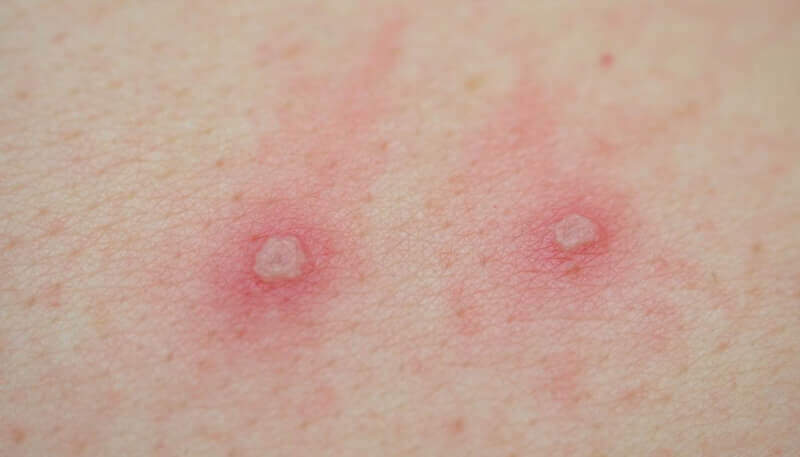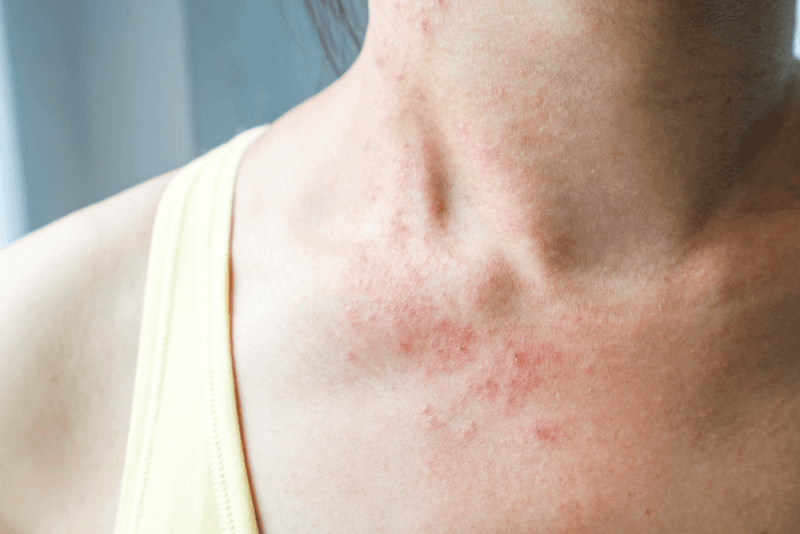Smallpox, a viral infection that has caused significant losses and epidemics in human history, last had an outbreak in 1946, and since then, there have been no reported outbreaks. Since the implementation of the smallpox vaccine, no one has naturally contracted the disease since 1977. Due to the similarity in names, smallpox is often confused with chickenpox among the public, but they are different diseases. The only similarity between the two is that they cause rashes on the skin. However, the symptoms of smallpox are much more severe.
What is Smallpox?
One of the deadliest epidemic diseases in history, smallpox is caused by the variola virus. The variola virus is divided into two types: major and minor. Patients infected with the variola major virus experience much more severe symptoms, and 30% of them die.
In contrast, symptoms are much milder in patients infected with the variola minor virus, with a mortality rate of 1%. Smallpox, which has caused high mortality rates in history, is also the first disease to have a vaccine. Therefore, smallpox has been a significant step for modern medicine and a breakthrough in public health protection.
Types of Smallpox
There are 4 main clinical forms of smallpox, each distinct from the other.
Variola Major
During the period when smallpox was prevalent, ordinary smallpox was the most common type, accounting for about 85% of all cases. The incubation period of the virus in this type lasts between 10 to 14 days, during which no symptoms are seen in infected individuals. Also, while patients feel good, they are not contagious.
Symptoms of this type of smallpox include the following, which are also symptoms of the prodromal period.
- Fever higher than 38.3 degrees
- Malaise
- Headache
- Back pain
- Vomiting
- Severe abdominal pain
- Chills
- Anorexia
- Pharyngitis
This stage lasts about 4 days. Rash can also be seen in patients during this stage.
In the eruptive stage of this type, the fever drops, and lesions begin to develop. The rash initially starts on the face and then spreads to the trunk, palms, and soles. Fourteen days after the rash begins, scabs start to form.
Sequelae
The sequelae type is where scarring is most common. The formation of pockmarks and scarring is due to the virus causing necrosis or damage to sebaceous glands. Scars can occur anywhere on the body but are most commonly seen on the face, where sebaceous glands are most prevalent.
- Blindness is rare and results from corneal scarring following keratitis or corneal ulcers. It typically occurs when there is malnutrition or an opportunistic infection.
- Encephalitis
- Osteomyelitis
- Stillbirths and spontaneous abortions
- Infertility in men
Modified Type Smallpox
Modified type smallpox is seen in individuals who have been previously vaccinated. In this type, severe headache, back pain, and fever are observed during the prodromal phase. These symptoms last as long as those in the ordinary type. Additionally, skin lesions generally develop more quickly after appearing, and scabbing occurs faster than in ordinary smallpox.
There are fewer superficial lesions than in ordinary smallpox. Moreover, the probability of fever during the development of rashes is higher in patients.
Flat Type Smallpox
Flat type or malignant smallpox is rare and characterized by intense toxemia. This type of smallpox, more common in children, develops slower skin lesions than ordinary smallpox. The lesions grow and merge, becoming flat and never progressing to the pustular stage.
The appearance of the lesions indicates an inadequate cellular immune response to the smallpox virus. A significant portion of flat-type smallpox cases are fatal. If patients survive, the lesions slowly disappear without scabbing. It is known that prior vaccination provides protection against flat-type smallpox.
Symptoms of Smallpox
Smallpox is a serious infectious disease, and its symptoms manifest in different stages. Each stage of the disease has distinct symptoms, allowing the progression of the disease to be tracked.
The incubation period, which can last from the initial infection up to 19 days, shows no symptoms. During this stage, the disease is not contagious. After the incubation period ends, the following symptoms are seen in patients:
- Fatigue,
- Nausea,
- Vomiting,
- Chills,
- Shivering,
- Headache,
- Body aches,
- High fever,
During the initial symptom stage, the disease is minimally contagious. The most contagious stage of the disease is the second stage, following the initial stage. Symptoms observed in the second stage include:
- Early rashes,
- Red spots on the surface of the tongue and inside the mouth,
- The spots in the mouth progress to the throat and turn into sores over time,
- Sores and rashes spread to the face, legs, hands, arms, and feet,
Approximately 4 days after the initial symptoms appear, the sores on the skin turn into inflamed blisters. High fever also accompanies these symptoms during this period.
After this period, for about 10 days, the sores turn into pustular lumps the size of peas under the skin.
The final stage is the recovery stage, which lasts about 2 weeks. During the recovery phase, the sores begin to scab, and the scabs eventually fall off.
How Does Smallpox Spread?
Before the smallpox vaccine, the disease could easily spread in crowded environments and within families. The ways smallpox spreads, which begins to spread from the first stage through droplets, include:
- Sneezing,
- Coughing,
- Talking,
- Breathing,
In the early rash stage, the smallpox virus spreads through the respiratory tract, and during the early rash stage, the scabs of the sores become contagious. Therefore, being in contact with infected individuals or touching areas they have touched is sufficient for the disease to spread.
There is no evidence that smallpox spreads through pets or insects. Therefore, it is believed that the disease spreads from person to person. The smallpox vaccine, implemented during severe epidemics, has been removed from official vaccination schedules today due to the absence of any cases.
Treatment of Smallpox
Smallpox can be diagnosed during the early rash stage. Because the rash of the disease has a more specific appearance compared to measles or chickenpox, it can be easily diagnosed by doctors.
Smallpox Vaccine
The smallpox vaccine, administered to prevent smallpox, is also used in the treatment of the disease. Patients infected with smallpox can experience milder symptoms thanks to the smallpox vaccine.
When administered within the first 3 days of exposure to the disease, the vaccine significantly prevents the development of the disease, preventing individuals from becoming infected.
However, if the vaccine is administered 4 to 7 days after exposure to the disease, it only helps alleviate the symptoms of the disease. If rashes have already formed, the vaccine does not help. Therefore, knowing the time of infection and immediate vaccination is extremely important.
Antiviral Drugs
There is only one FDA-approved antiviral drug used in the treatment of smallpox. This drug is also used to eliminate the side effects of the smallpox vaccine.
Supportive Treatments
Anti-inflammatory drugs are used to relieve pain in the treatment of smallpox. Additionally, it is very important for patients to eat healthily during this period. Also, supplements such as vitamin C and vitamin D should be taken to support the immune system.
Since the symptoms of smallpox are similar to those of other infectious diseases and smallpox is also a contagious disease, individuals showing symptoms should be isolated as soon as possible.










